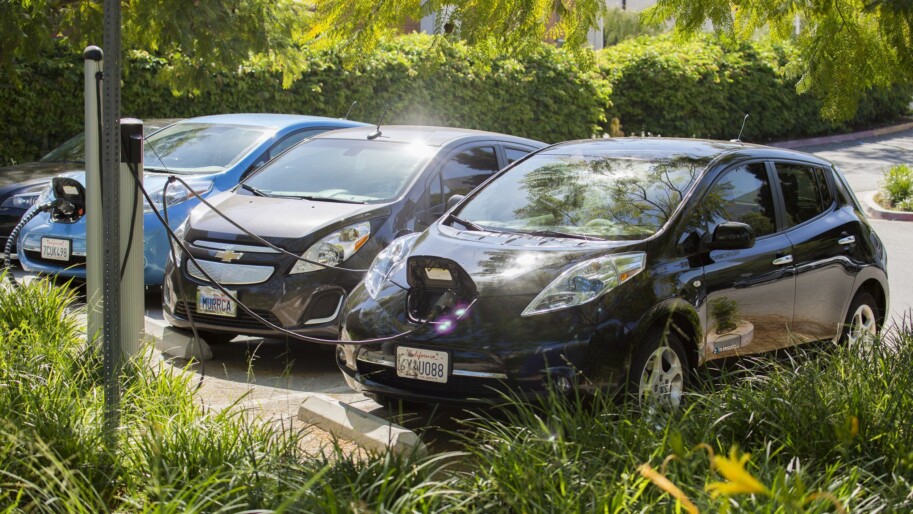Doron Amiran works on electric vehicle adoption policies and programs for The Climate Center.
In this month of July, as we reflect back on America’s history, we remember Paul Revere’s cry, “The British are coming!” Current times merit new warnings, only this time, there’s good news: The electric cars are coming. Almost half a million Leafs, Teslas and other smart, clean and modern EVs already ply the roads of California alone, and experts are predicting that as early as 2030, over half of the new cars sold will be electric. Here at The Climate Center we think the adoption rate should be even faster, with 2030 marking the date when all or almost all new cars sold will be electric.
But for a wave of electric vehicles to wash away all those gas-guzzling and polluting internal combustion smog machines, we will need more places to charge all those electric cars, trucks and SUVs. Despite the fact that 80% of charging happens at home, there will still need to be ample places to “fill up,” especially at workplaces, and along highway corridors.
Good news, California. 250,000 chargers are coming! Governor Brown recently announced a $2.5 billion plan to boost EV use, in large part by vastly increasing the number of chargers available to drivers here in the Golden State. This program is in addition to large investments in EV charging infrastructure already announced by utility companies, air districts, and automaker Volkswagen. Literally billions of dollars will be pouring into expanding charging networks in the next few years. How vast is the increase? It is exponential, as there are now about 15,000 public chargers operational in California.
Good news is also coming on the technology front, as wireless inductive charging, already available, but still considered an emerging technology, will make charging easier and more convenient. Using this type of charging, EV drivers will simply be able to pull into a parking place and walk away, and their car will charge without even needing to plug in.
Battery technology is also advancing rapidly, and better and cheaper batteries mean longer and longer ranges for EVs. The first generation of electric cars, which got 80-100 miles on a charge, will soon look like Model Ts to us, as all the new models being released or announced have ranges of 150-200 miles or more. This will mean less charging will be needed “out and about,” and that in the near future cars that go 300 miles or more on a charge will be standard.
Furthermore, the planned increase in fast charging along highways and in remote areas will unlock the iconic American road trip for EV drivers. Tesla’s supercharger network is paving the way in this regard, and has allowed Tesla drivers to easily travel thousands of miles, with a stop every few hours for a 20 minute “fill up.” This convenience will soon be available to all EV drivers.
With technology advancing so rapidly, EV drivers can be confident that they will be able to get where they want, when they want, at a lower cost, and with a fraction of the carbon footprint of their old car. So if you are considering an electric car, but concerned about range and availability of charging, you can move ahead with confidence, because the chargers are coming, the chargers are coming!


